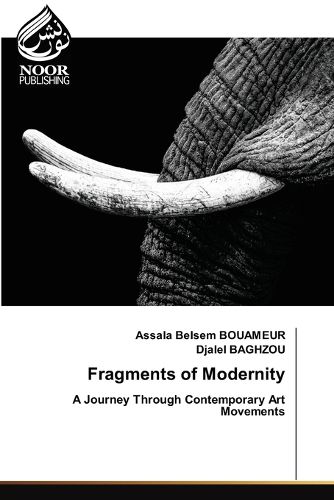Readings Newsletter
Become a Readings Member to make your shopping experience even easier.
Sign in or sign up for free!
You’re not far away from qualifying for FREE standard shipping within Australia
You’ve qualified for FREE standard shipping within Australia
The cart is loading…






This title is printed to order. This book may have been self-published. If so, we cannot guarantee the quality of the content. In the main most books will have gone through the editing process however some may not. We therefore suggest that you be aware of this before ordering this book. If in doubt check either the author or publisher’s details as we are unable to accept any returns unless they are faulty. Please contact us if you have any questions.
The evolution of modernity in art is marked by continuous ruptures, reinventions, and the interplay between tradition and innovation. Movements like Cubism, Dada, Abstract Expressionism, Minimalism, and Pop Art challenged conventions, expanding art's definition. Postmodernism further dissolved aesthetic hierarchies, emphasizing intertextuality, appropriation, and conceptual frameworks. Today, technology, especially AI and digital media, reshapes creativity, raising questions about authorship, originality, and ethics. AI-generated art challenges the artist's role as an autonomous creator, while corporate algorithms influence artistic visibility and commodify digital aesthetics. Modernity in art is an evolving condition, reflecting tensions between human agency, technology, and institutional structures. As art pushes boundaries, navigating ethical, legal, and aesthetic challenges in a digitized world becomes crucial. This study highlights the need for adaptive, inclusive approaches to creativity in the 21st century, situating artistic evolution within broader sociocultural and technological contexts.
$9.00 standard shipping within Australia
FREE standard shipping within Australia for orders over $100.00
Express & International shipping calculated at checkout
Stock availability can be subject to change without notice. We recommend calling the shop or contacting our online team to check availability of low stock items. Please see our Shopping Online page for more details.
This title is printed to order. This book may have been self-published. If so, we cannot guarantee the quality of the content. In the main most books will have gone through the editing process however some may not. We therefore suggest that you be aware of this before ordering this book. If in doubt check either the author or publisher’s details as we are unable to accept any returns unless they are faulty. Please contact us if you have any questions.
The evolution of modernity in art is marked by continuous ruptures, reinventions, and the interplay between tradition and innovation. Movements like Cubism, Dada, Abstract Expressionism, Minimalism, and Pop Art challenged conventions, expanding art's definition. Postmodernism further dissolved aesthetic hierarchies, emphasizing intertextuality, appropriation, and conceptual frameworks. Today, technology, especially AI and digital media, reshapes creativity, raising questions about authorship, originality, and ethics. AI-generated art challenges the artist's role as an autonomous creator, while corporate algorithms influence artistic visibility and commodify digital aesthetics. Modernity in art is an evolving condition, reflecting tensions between human agency, technology, and institutional structures. As art pushes boundaries, navigating ethical, legal, and aesthetic challenges in a digitized world becomes crucial. This study highlights the need for adaptive, inclusive approaches to creativity in the 21st century, situating artistic evolution within broader sociocultural and technological contexts.